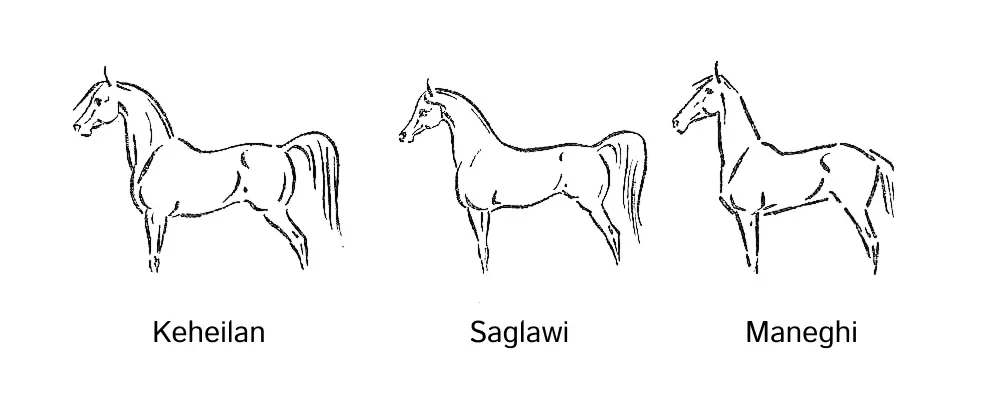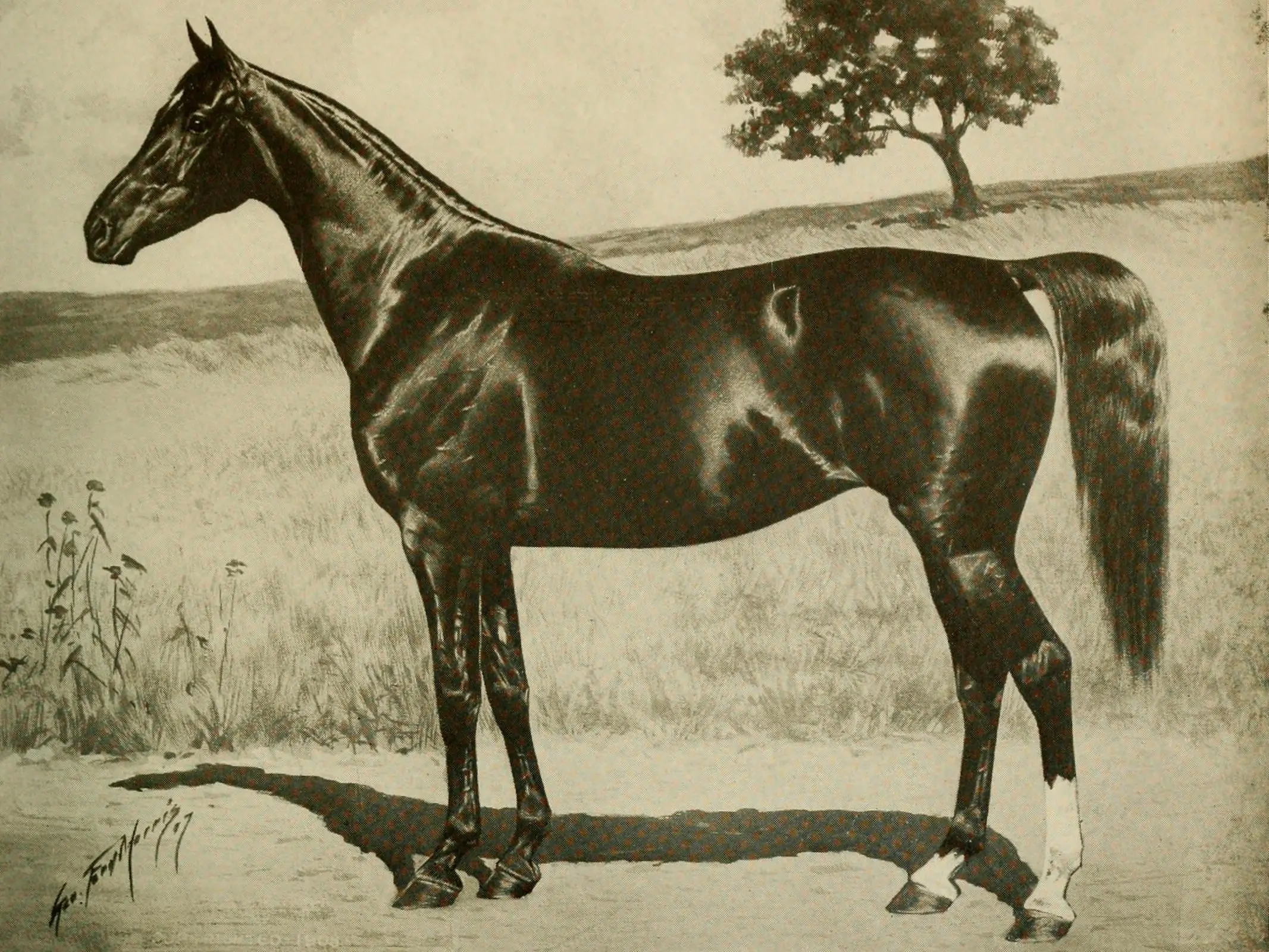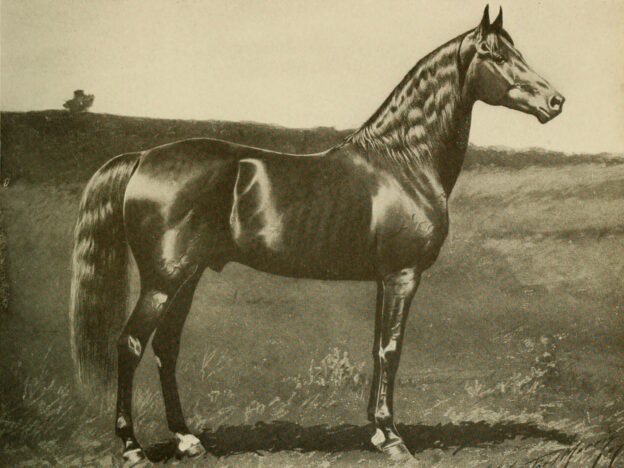Intro
The Keheilan Arabian is among the original and pure strains of desert-bred Arabian horse, these pure strains are also sometimes called Al Khamsa and Asil.
Origins
The term Al Khamsa translates to ‘The Five’, referring to mythology behind origins of the Arabian breed. Legend says the The Five were a group of five foundation mares which established the breed. A lovely legend spun around a spectacular breed of horse. Asil essentially means ‘pure’ and also refers to the founding myth. Today the term Al Khamsa has a more grounded meaning and usually refers to a pedigreed animal, whose lineage can be traced.
Today, only a small percentage of Arabian animals carry the distinction of being of pure desert-bred lineage. Pure strains can be found across several countries, but their documentation and sworn oaths remain standard practice to ensure pure bloodlines persist.
The Legend
The Al Khamsa legend has religious connotations, as the five foundation mares were Muhammad’s favorite. The story says that after a long trek through the desert, Muhammad freed his herd at an oasis to quench their thirst. As the animals were running towards the much needed water, he blew his battle horn, signaling the horses to return to his side. Only five of the mares returned to him, becoming his favorite of the herd. These five mares went on to spearhead the five strains of pure Al Khamsa. Bedouin prize their mares above all other animals, their lineage is matrilineal and purity of bloodlines is of supreme importance. To the point that if a mare is covered by an impure stallion, they and their future progeny can no longer be considered Asil.
The Five
Over the centuries, several Bedouin developed strains emerged. While attributed to the five foundation mares, they truly come from the careful and specialized breeding practices of the nomadic tribes that treasure them. Each strain carries its own physical characteristics and three of these strains are the most well known.
Abayyan or Abeya – light and refined, known for graceful movement and agility.
Hamdani – a masculine type, which heavier and possessing powerful athletic ability.
Hadban – larger and more muscular, they are powerful and known for endurance and hardiness.
Keheilan or Kuhaylan – strong with a compact build, considered the classic desert warhorse.
Saglawi or Seglawi – slender and refined, they are prized for their feminine beauty.
Saudi Strains
Below is a quick idea of three of the different types bred in Saudi Arabia according to the DAD-IS.

Keheilan
Among the more popular of the strains for export is the Keheilan or Koheilan which is perhaps the most robust and described as a tall, strong animal. According to legend, Koheyléh was among the five mares that returned to Muhammad and when she did he smeared her eyes with kohl, naming her. This strain is appreciated for their solid construction, larger body mass, endurance and stamina.
Thought to originate with Bedouins from central Saudi Arabia and said to be bred by the Ottoman Empire for their cavalry in the mid 17th century. Later during the 19th century, Polish count Wacław Seweryn Rzewuski imported them to his stud farm, calling the animals “all blood and fire”.
Features
Average height 14.6 hands
Considered a ‘male’ type
Physique
Head is wedge-shaped, dished and refined
Small muzzle with large nostrils
Big expressive eyes
Short curved ears
Neck is arched with a refined, clean throatlatch
Chest is deep
Body is compact with short back
Tail is high set
Traditional Colors
Solid colors
Temperament
Spirited
Intelligent
Bold
Use
Enhancing other bloodlines
Racing
Pleasure
Showing
Endurance
More Images

